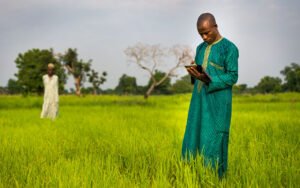Now, think of a time or world where security finances also come as a basic need rather than a privilege reserved for selection. There are several underdeveloped nations in this world, out of which several million have to cope with unforeseen circumstances that might alter their entire lives; these could be natural disasters, accidents, or, in some cases, illness. More often than not, these problems tend to push the already underprivileged families into robust levels of poverty. This is where microinsurance can assist, a salient method that aims to keep low-cost, unprivileged people on the protected side of life’s uncertainties.
Microinsurance is also a form of providing a safety net with foreign purposes that can be quite crucial for helping those most in need and encouraging those in the community by giving them the resources needed to overcome such situations. But how does it work? Let’s further investigate what is microinsurance and what are the possibilities for this to change lives and communities that are embroiled in poverty to step out into the big wide world without having to worry about a thing.
Definition and Purpose of Microinsurance:
Microinsurance is considered the insurance for low-income group people; it aims to cover people with low resources for them to be able to afford the coverage. Microinsurance helps low-income families tackle risks that can lead to financial struggles. It acts as a safety net that protects families from difficult situations during events such as an accident, illness, or a natural disaster.
It also helps those who have to take out loans to afford basic commodities, such as insuring their health and properties. This type of insurance is unlike any other, as it is much cheaper and easier to obtain. This reduces the burden financially for many struggling families when they are faced with a crisis. This helps form a sense of bravado in them, as they can use the lost expenses to turn another opportunity into profit without having the dread of losing everything to harsh situations.
Effects of Poverty on People and Society:
Poverty is a web, one that captures not only a person but groups of people along with entire societies. It prevents people from getting a bite to eat or receiving shelter when in marginal situations. This is why many children often look towards the future with no hope when they go through life facing societal neglect.
Unfortunately, children born into poverty are put into a predicament where they are well aware of the systemic issues, as they are forced to attend an under funded school. It is a cycle that loses more and more momentum with time, with limited resources available to help nurture young minds. Many potential dreams never reach their zenith due to their environments.
Moreover, society as a whole suffers through unemployment, mental illness, and growing crime rates amongst the younger generation, which serves as a ripple effect of all the unnoticed businesses that didn’t make it out of the economic recession.
Poverty tends to erode social bonds, which happens when people are driven by survival instincts to distrust one another. The damage is often substantial, making people feel that there is no hope and this goes on for generations. There are numerous attempts also towards tackling this problem at hand, which can even be microinsurance, that aims to provide support and foster growth.
How Can Microinsurance Help Alleviate Poverty?
Microinsurance is indeed a great weapon when waging a war against poverty. It allows for low-cost insurance for people who don’t have access to these services. For some people, this is a savior in times of crisis. When certain circumstances arise, such as diseases or natural calamities, the economic pressure can be too much. The use of microinsurance serves to help alleviate such hardships and allows families to be able to recover without necessarily sinking deeper into debt.
Microinsurance strengthens the welfare of individuals and societies through the protection of their assets and funds. Such security helps to make investments in education, small-scale farms, and health, among other areas, to aid in breaking the chain of poverty.
In addition, microinsurance builds resilience amongst the weaker sections of society. People will only measure if what they are going to invest in will be worth the risk, and that kind of attitude will assist their communities in developing and stabilizing. Through the right education, perfect awareness can go further. It effectively fills the voids when traditional systems tend to falter while providing optimism for a greater tomorrow.
Microinsurance Challenges in Implementation:
- Microinsurance has its challenges to implement. One major issue is the ignorance of potential beneficiaries. They lack awareness about the existence and functioning of such services in low-income communities.
- These factors also add up to a decision. For many countries across the world, the microinsurance regulatory framework is either weak or nonexistent. This makes it hard for providers to be able to do business well in a sustainable manner.
- Another hurdle is the problem of trust. Insurance products could be seen by many people as irrelevant due to past experiences or culture. It is a process that needs to be undertaken over time with effective engagements.
- Also, the last issue is regarding costs. Though microinsurance is meant to be cheap, even low premiums constitute a big burden on the poor.
- Distribution channels add further complications. Reaching out to underserved rural populations always requires creative strategies that are not always available or practical.
Ways to Support and Improve Microinsurance Initiatives:
There is a need for improving these microinsurance initiatives in the first place. While sheer support by the government in violation turns heads, policies that stimulate innovation in the microinsurance sector do. Giving a subsidy or paying tax incentives enables providers to expand to unserved regions.
Non-profit-making groups and NGOs are important also. They can sensitize people to what they stand to gain from microinsurance so that they start building faith and confidence in the practice. Workshops, community meetings, and outreach programs go a long way in demystifying insurance concepts.
Technology also has transformative potential. With a mobile app, a user can purchase insurance products directly from the palm of his or her hand, which gives the user the ability to buy insurance readily. This not only improves customer satisfaction but also reduces the amount of red tape involved in the provision of services by the providers.
Impacts investors should consider providing working capital for microinsurance start-ups or already operational programs established for social impact. Their funding could increase efforts to reach the poor, as well as to adapt the existing products to the needs of local markets.
Encouraging traditional insurers together with microinsurers may result in the pooling of resources and expertise for the benefit of all.
Conclusion:
For many people on the low end of the economic pyramid, microinsurance is nothing short of a miracle. It helps to mitigate the risks that many conventional insurance models fail to cater to. By enabling the provision of insurance at a high level and a low cost to most people, they can manage the risks that they face.
The incremental benefit extends well beyond individual risk. Whole communities can prosper when their members are protected from economic catastrophe. Health, agricultural, and asset insurance build some protection against periodic economic knockouts.
Promoting microinsurance-based schemes is more than just a benevolent act; it is about building a “constructive” future. When we empower the weakest among us, we ensure that societies become stronger as a whole. Everyone’s efforts matter when it comes to changing the world. In this way, we can develop new ways and strategies to solve the issues associated with poverty around the world. Interaction with the local people will take these projects further into becoming success stories that are shareable and implementable across nations.
FAQs:
1. What is microinsurance?
Microinsurance is one of the insurance policies that covers a specified region at low-cost facilities and is bountiful, targeting people with lower earnings. It aims at safeguarding them from several specific risks, including health, natural catastrophes, or farming risk exposure such as floods, droughts, etc.
2. Who benefits from microinsurance?
Microinsurance has targeted the lower end of the income spectrum, particularly low-income earners and poor families. The new coverage provides them with a safety net that the conventional insurance market ignores because of the high costs and complex structures of most policies.
3. How is microinsurance different from normal insurance?
The average insurance cost incurred by the insured is much lower, designed for the low neighborhood market. Its policies are much less complex and easier to access than the standard offerings, which makes underserved markets easier to consider their potential options.
4. Are there successful examples of microinsurance programs?
Yes! Many programs have been able to lower poverty levels through the provision of key coverage. Efforts in countries such as India and Bangladesh are case studies of how effective these services can be if well administered.
5. What challenges do microinsurance initiatives face?
Some challenges include regulatory barriers, lack of awareness among target potential clientele, and difficulty in accessing rural areas. Tackling these challenges is vital to increasing the availability of this essential product.




